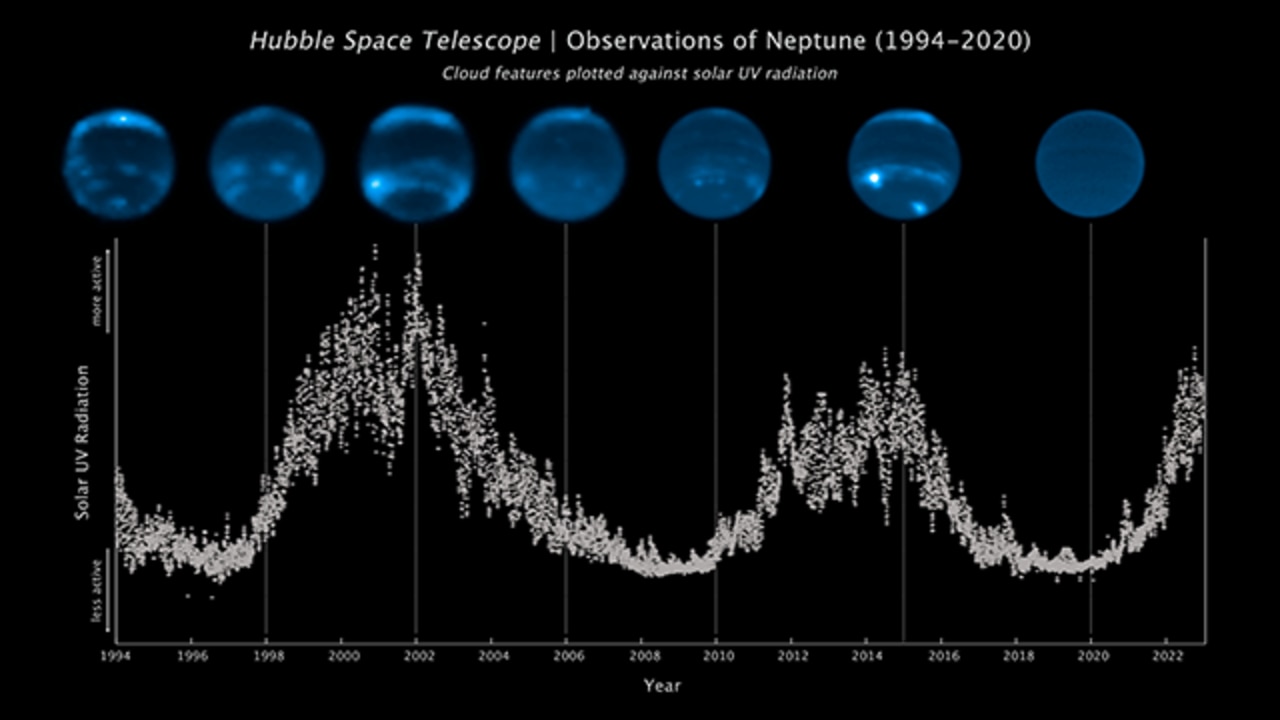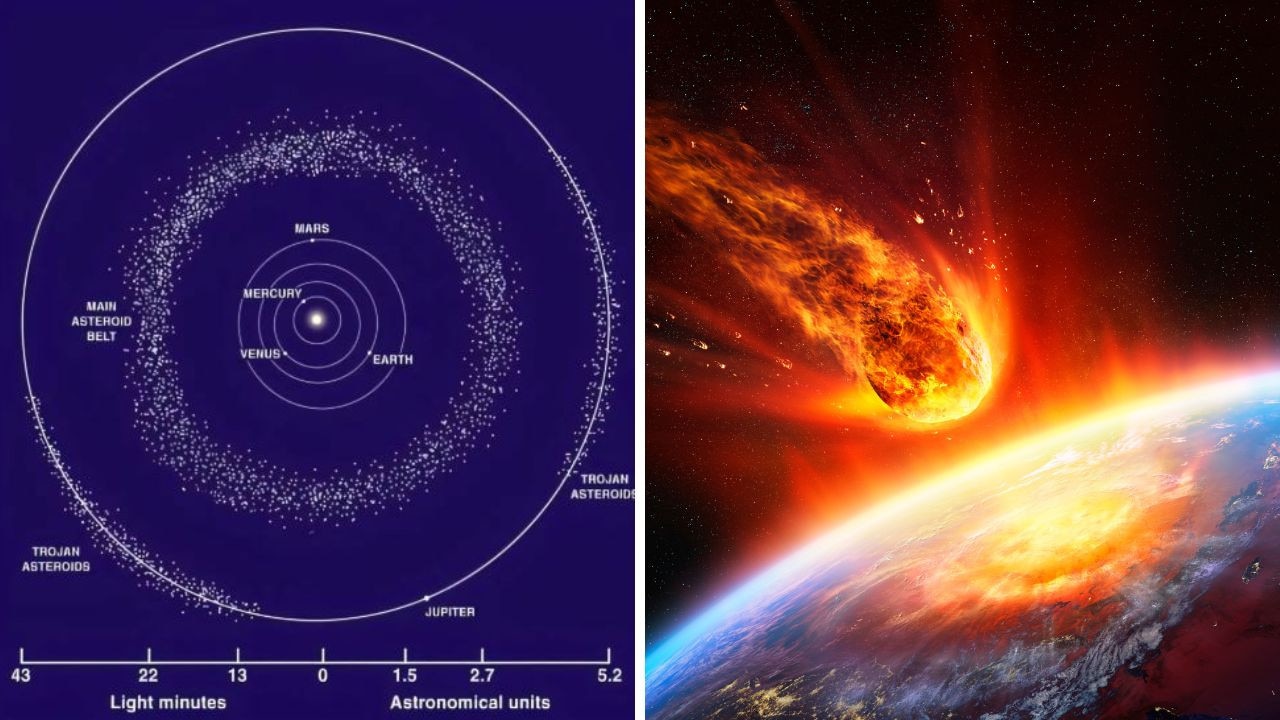Neptune’s clouds have nearly completely vanished
Scientists were stunned to find out Neptune’s cloud cover had nearly vanished – and immediately set out to solve the mystery.

When scientists found out that Neptune’s shimmering clouds had almost completely vanished they were perplexed.
The gas giant orbits at an average distance of 4.4 billion kilometres from the Sun – what could be the culprit?
Scientists have long been interested in the “active and chaotic” atmosphere of the gas giant but very little is known about the planet. It has only been visited by one spacecraft – Voyager 2 in August 1989.


Neptune’s clouds regularly ebb and flow but a photo from 2019 showed they had mostly vanished, apart from a small portion near the south pole.
“It was the first time anybody had ever seen this,” Dutch astronomer Dr Imke de Pater, who works at the University of California, Berkeley, told the New York Times.
“There’s just nothing there. What’s going on?”
Erandi Chavez and her colleagues published a study recently in the journal Icarus that documented cloud activity on Neptune between 1994 and 2022.
To solve the mystery they compared images of the planet from the Hubble Telescope as well as the Keck and Lick observatories with data of the Sun’s cycles.
They concluded that the lack of cloud coverage has some correlation with the Sun’s 11-year solar cycle.

The researchers found that clouds began to appear on Neptune about two years after the powerful UV irradiation ended.
The Sun’s magnetic field reverses every 11 years which comes with an increase in UV irradiation followed by a “quiet period.”
The last cycle occurred in 2015, then darkened in 2020 to the lowest level ever observed.
“These remarkable data give us the strongest evidence yet that Neptune’s cloud cover correlates with the Sun’s cycle,” Dr de Pater said.
“Our findings support the theory that the Sun’s UV rays, when strong enough, may be triggering a photochemical reaction that produces Neptune’s clouds.”
Ms Chavez said: “Even four years later, the images we took this past June showed the clouds haven’t returned to their former levels.
“This is extremely exciting and unexpected, especially since Neptune’s previous period of low cloud activity was not nearly as dramatic and prolonged.”
It’s an incredible achievement to be able to use telescopes from Earth to study the climate of a planet more than 4 billion kilometres away, Carlos Alvarez from Keck Observatory said.






